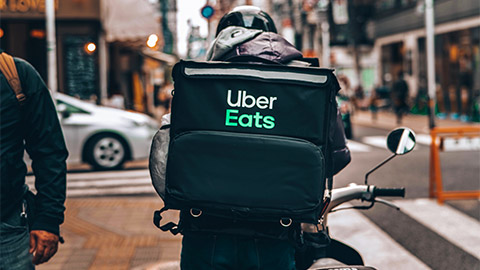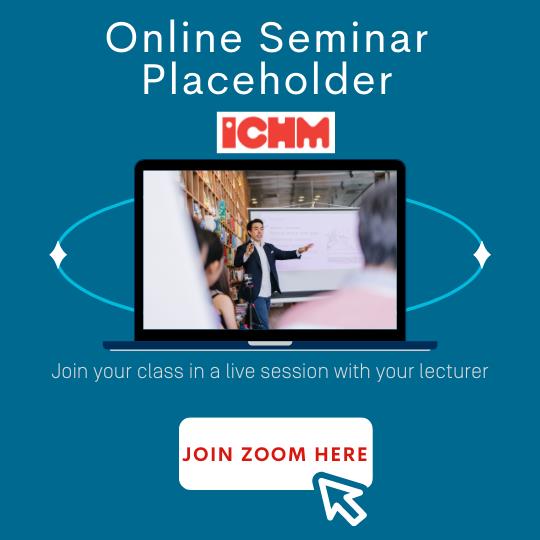In this topic, we discuss the last of the 4Ps – place. The key concepts concerning distribution or place might seem redundant in a service context, as there is a distinct lack of tangible products to distribute! However, key distribution decisions have significant implications for service organisations. The distribution strategy helps provide convenience for the consumer (particularly if they have to physically attend the service facility) and impacts the service encounter (especially in online versus face-to-face environments). In addition, there are various pre-service encounter actions (such as reservations and payments) that likely require a different distribution strategy than the actual service itself. For instance, you might be happy to travel quite a distance to attend a show or go to a restaurant, but less likely to travel that same distance simply to make the booking or purchase the ticket in advance! An online presence and/or intermediaries prove very helpful distribution channels in this regard.
Welcome to Topic 7: Creating a Marketing Advantage Through Service Delivery Channels. In this topic, you will learn about:
- The four (4) questions that form the foundation of any service distribution strategy
- The three (3) main distribution options for serving customers
- The determinants of customers’ channel preferences
- The issues of delivering services through electronic channels
- The key role of intermediaries in distributing services
- The special challenges of distributing services internationally
- The role of blueprinting in designing and distributing services.
As we progress in this topic, we delve into the What, How, Where and When of service distribution and explore the customer preferences that might drive some of these distribution decisions. Ever-increasing digital capabilities have had a huge impact on services, particularly over the past decade; those impacts will also be explored. We will also consider the merits of outsourcing particular elements of the service offering to intermediaries and international expansion implications.
These relate to the Subject Learning Outcomes:
- Discuss the key concepts, principles and unique challenges of services marketing in relation to the extended marketing mix.
- Discuss the impact that business-to-customer ecommerce has on services marketing innovation.
Welcome to your pre-seminar learning tasks for this week. Please ensure you complete these prior to attending your scheduled seminar with your lecturer.
Click on each of the following headings to read more about what is required for each of your pre-seminar learning tasks.
Read Chapter 5 of the prescribed text - Lovelock et al. 2014, Marketing in the service economy, 6th edn., Pearson Australia.
Read the following journal article:
Wang, C, Harris, JA & Patterson, PG 2013, ‘The roles of habit, self-efficacy, and satisfaction in driving continued use of self-service technologies: a longitudinal study’, Journal of Service Research, 16(3):400-414.
Read the following article:
Eldeman, B 2014, ‘Mastering the intermediaries’, Harvard Business Review.
Read the two (2) case studies:
- 'Technology-based self-service' on pp. 134-135 of the prescribed text.
- 'Mini case: Myer expects tenfold increase in online sales' on p. 156 of the prescribed text.
Read and watch the following content.

Distribution strategy in a services context
When establishing your understanding of distribution strategy for services, it is important to consider the strategy comprises of four (4) key aspects, which include:
- What
- How
- Where
- When.
Let us discuss each strategy in detail.
What is being distributed?
To understand what is being distributed, we can think about the following three (3) elements (Lovelock et al. 2014):
- Information and promotion flow
- Negotiation flow (agreement of features, configuration and terms)
- Product flow (physical facility requirements) (remaining petals – exceptions, safekeeping, hospitality - and core service).
It is important to think about these elements in terms of core versus supplementary elements of the service – recall the Flower of Service from Topic 4 (Lovelock et al. 2014). Let us consider the example of a musical production travelling to a capital city, and describe the implication for each distribution element and corresponding supplementary service elements:
- Information and promotion flow relate to the information and consultation petals of the flower of service – how is information distributed to consumers to help them make a decision?
- For the musical production, this could occur through online channels (production’s own website, venue’s website), or through intermediaries (venue’s physical location, box office intermediaries, even major hotel concierges).
- Negotiation flow relates to the order-taking, billing and payment petals.
- For a musical, this would most likely be handled through the venue or ticketing/box office intermediaries. Digital channels play an important role here – gone are the days when people would line up at the box office on the morning the tickets for a show went on sale. Now, digital purchases provide a timely and highly convenient option. Convenience holds greater importance for these pre-service elements. You would likely be willing to travel to a specific location for the core service (seeing the musical), but less willing to travel that same distance merely to purchase the ticket.
- Product flow relates to the remaining petals – exceptions, safekeeping, hospitality – and core service.
- The venue is the service facility in the example of the musical. It would hold responsibility for managing these supplementary elements (the hospitality and ambience of the theatre, the safety measures put in place, and so on). The musical production delivers the core service in this facility, with customers required to travel to that location to receive the service.
Distribution options for serving customers (How)
According to Lovelock et al. (2014, p. 131), the key question of how a service should be distributed is:
“Does the service or the firm’s positioning strategy require customers to be in direct physical contact with its personnel, equipment and facilities? If so, do customers have to visit the facilities of the service organisation or will the firm send personnel and equipment to customers’ own sites?”Lovelock et al. 2014, p. 131
There are three (3) main distribution options (types of interactions) for serving customers, as listed in the following table:
| Types of interaction between customer and service organisation | Examples of service outlets | |
|---|---|---|
| Single site available | Multiple sites available | |
| 1. The customer goes to a service organisation |
|
|
| 2. Service organisation comes to customer |
|
|
| 3. Customer and service organisations transact remotely (mail or electronic communication) |
|
|
Watch the following video, which discusses service distribution channels in a healthcare services context.
Channel preferences vary between consumers
Different channels imply vastly different customer experiences, and different consumers may have preferences for specific channels/experiences (Lovelock et al. 2014). The most obvious contrast is between electronic self-service and face-to-face channels. There are many examples where the one provider uses multiple channels to serve different customers with different preferences and needs. Let us discuss a few examples now.
Example: Banks
Banks have physical branches, online services, phone banking as well as apps. The digitalised service channels provide convenience and speed of service and are cost-effective. However, preference for digital versus in-person channels may change depending on the customer (older versus younger, digitally savvy versus novice) and/or the type of transaction (everyday banking and paying bills versus taking out a loan or mortgage).
Example: Tax return
There are also various options for completing your tax return. For example, those wanting to complete their tax return with zero assistance can do this online via the Australian Taxation Office (ATO). Accountant firms also provide varying levels of assistance for customers completing their tax return, ranging from an in-person consultation where the accountant submits the tax return and completes all requirements on behalf of the customer, to the customer completing a majority of their tax return independently online, with brief confirmations and quality checks by the accountant. These options cater to those with varying financial competence, the complexity of tax return requirements, and/or comfort level with digital service.
Place and time decisions (Where and When)
The physical location of a service will be a trade-off between the costs and resource requirements, and customer preference and convenience. Cost and resource requirements include what facilities are required and available at a feasible price for the service organisation. Customer preference is a significant factor for frequently used services and competitive environments, particularly when there are few major differences in offerings (Lovelock et al. 2014). A customer is more likely to go out of their way to travel to a specialty service (such as a preferred hairdresser, medical specialist, and so on), than to a frequent, low involvement service such as a dry cleaner.
Ministores
Ministores are one way of achieving broader geographic coverage without having to outlay the full costs associated with an entirely new store (Lovelock et al. 2014). ATMs are a very common example of this, where one key aspect of the banks offering (withdrawing cash) is available broadly, while other elements of the service require patronage to a full-service store.
The development of food delivery services such as UberEats, Deliveroo and Menulog have prompted the innovative idea of ‘dark kitchens’, which use this ministore concept by having food prepared in kitchens that do not have a dine-in facility. These ‘dark kitchens’ allow restaurants to cater to more customers both in terms of volume and geographic coverage, without the large financial outlay of opening an entirely new restaurant (Fine Food Australia 2021).
Multipurpose facilities
Multipurpose facilities within commercial and residential blocks are also becoming commonplace and provide an alternate venue from the high streets, open malls and shopping centres where various product and service providers usually congregate (Lovelock et al. 2014). The rationale for these facilities is to specifically target those working/living or visiting these locations, to provide the highest level of convenience to them to promote repeat purchase and, ideally, loyalty behaviours.

Time considerations
As well as geographic decisions, there are also time considerations – what hours of operation should the service provider offer (Lovelock et al. 2014). There is a strong shift towards extended service hours to provide greater convenience. This is particularly important for services where the customer needs to be physically present at the service location, as customers need to work around their professional and other commitments (Chron 2021). Some service organisations implement extended trading hours at peak demand periods. A couple of examples include accountants at tax time and hairdressers before Christmas/end of year holidays (Chron 2021).

Services delivered online
Technological innovation continues to deliver new ways to enhance and/or streamline the service experience (Lovelock et al. 2014). In terms of supplementary service elements, online bookings and information delivered through websites and social media are now commonplace for many service organisations. Many core services are now transitioning entirely online as well. The COVID-19 pandemic was a real catalyst for many services transitioning to a completely online (UNCTAD 2021), from medical and psychology appointments to professional services such as accounting and education, to personal wellbeing services such as online physiotherapy and personal training sessions.
There are also great examples of entertainment or social event experiences that moved online during COVID-19. These events are important service experiences that foster engagement and loyalty between brands and their consumers. Even in the face of lockdowns and physical distancing, many organisations have maintained this connection with customers via digital means. The following are two (2) examples of such services delivered online:
Example: Carwyn Collaborational 2020 virtual festival
Carwyn Cellars are a boutique beer store based in Melbourne that runs a lot of tasting sessions and similar events. However, when they were unable to do this during COVID-19 lockdowns, they transitioned online. For the Carwyn Collaboration 2020 event, they sent out 12 beers to attendees, each was a unique collaboration between a local and international craft brewery, and then they streamed an online tasting event for people to get together, taste and discuss with Carwyn staff, the breweries, and each other in real-time, if not in person (Carwyn Cellars 2020).
Example: Mabu Mabu
Mabu Mabu is an Indigenous-owned kitchen in Melbourne and during COVID-19 lockdowns they have hosted online cooking classes. Mabu Mabu sent a box of ingredients to event attendees and head chef Nornie Bero took attendees through an online cooking class to recreate their signature damper at home (TimeOut 2020).

The role of intermediaries
Service organisations can utilise intermediaries to outsource certain supplementary service elements. A common element for outsourcing is booking services. For example, you can purchase food from a restaurant through UberEats, or accommodation through a travel agent or online intermediary such as booking.com.
In these situations, the service organisation relinquishes control over elements of the service experience. This can be problematic if the intermediary does not provide a service on par with the service organisation (or customers’) expectations and therefore requires oversight and effective management to ensure a consistent and positive service experience.

Distributing services internationally
There are various factors pushing organisations (both goods and services) to have an international presence and scope. Lovelock et al. (2014) discuss various drivers including:
- Market
- Competition
- Technology
- Cost
- Customer needs
- Government.
Learning task 1: Reading
Read the following article on global business services models.
Daub, M, Ess, A, Silver, J & Singh, S 2017, Does the global business services model still matter?, McKinsey Digital.
As we continue to shift to a global economy where geographic location provides less of a barrier relative to the benefits of international expansion, it is important to remember that services inherently involve more personal interactions and therefore, are more culturally sensitive than selling goods (Lovelock et al. 2014). If you recall Topic 2: Customer Behaviour, Culture and Service Encounters, we elaborate on the key implications culture can play in preferences and attitudes towards service encounters. Service organisations seeking to expand into a new country should understand the key cultural differences of that country and determine what elements of the service offering require modification to effectively operate in this new environment.

The role of flowcharting and blueprinting
In delivering a service, there are usually multiple steps in the process and various points in which the customer needs to participate and interact with service staff. Therefore, service flowcharts and blueprints are helpful tools to highlight discrete points within the service delivery process, which can help identify key weaknesses or customer barriers within the service delivery process, as well as the different people and processes involved in different steps (Lovelock et al. 2014). This is particularly important for complex services where a lot is required from the customer, and where various systems and teams might be working separately to deliver the service – where customers (and employees) can ‘get lost’ in this complexity. Flowcharts and blueprints are the road map to successfully navigate through this complexity.
Watch the following video, which discusses the four (4) key components of service blueprints.
Watch this follow-up video, which describes some of the frustrations that service organisations face when developing service blueprints as well as how to overcome them.
Knowledge check
Complete the following two (2) tasks. Click the arrows to navigate between the tasks.
Key takeouts
That is it for Topic 7! Here are some key takeouts:
- Service organisations must make decisions on the What, How, Where and When of service distribution with consideration to customer sentiments and feasibility.
- There are three (3) key distribution options available, and the benefits and limitations of each option depend on the type of service and the company’s strategy.
- The customer goes to the service organisation
- The service organisation comes to the customer
- The customer and service organisation transact remotely.
- Ministores, intermediaries and online distribution are each ways that service organisations can expand their geographic scope without incurring significant additional costs.
- There is a huge shift towards digital integration, with various implications for service distribution. From online information, bookings, to self-service technology, to an entirely online service experience, service organisations must consider how digital can help facilitate some (or all) of their service offering.
Welcome to your seminar for this topic. Your lecturer will start a video stream during your scheduled class time. You can access your scheduled class by clicking on ‘Live Sessions’ found within your navigation bar and locating the relevant day/class or by clicking on the following link and then clicking 'Join' to enter the class.
Click here to access your seminar.
The following learning tasks will be completed during the seminar with your lecturer. Should you be unable to attend, you will be able to watch the recording, which can be found via the following link or by navigating to the class through ‘Live Sessions’ via your navigation bar.
Click here to access the recording. (Please note: this will be available shortly after the live session has ended.)

In-seminar learning tasks
The in-seminar learning tasks identified below will be completed during the scheduled seminar. Your lecturer will guide you through these tasks. Click on each of the following headings to read more about the requirements for each of your in-seminar learning tasks.
In a breakout room assigned by your lecturer, you will be given one (1) of the following questions to discuss. At the end of the discussion, you will share your responses with the class:
- What are the different options for service delivery? For each of the options, list the factors service providers need to take into account when using that option.
- What factors appear to influence customer adoption of technology-enabled services?
In your pre-seminar learning tasks, you read the following two (2) case studies. In a breakout room assigned by your lecturer, you will be given one (1) of the following case studies to discuss. Use the provided questions to guide your discussion. At the end of the discussion, you will share your responses with the class:
- Technology-based self-service (pp.134-135).
- Select a service organisation that has implemented SSTs, and analyse this strategy in terms of the three (3) key benefits and five (5) SST characteristics outlined in the case. Was their SST strategy effective?
- Using the same service organisation from the first question, which key individual determinants are most relevant for SST adoption for that particular service? What strategies could the organisation employ to help reluctant individuals adopt SST?
- Mini Case: Myer expects tenfold increase in online sales (p. 156).
- Log onto Myer online and evaluate the website in terms of general appeal, ease of navigation, visual appeal, range of merchandise, device ambiguity and any other criteria you might like to employ.
- Do you think Myer can effectively compete with online competitors such as Amazon, Kogan, ASOS? Make sure you explain your reasons in detail.
In a breakout room assigned by your lecturer, you will be given one (1) of the following questions to discuss. At the end of the discussion, you will share your responses with the class:
- An entrepreneur is thinking of setting up a new professional service business (for example, as an accountant, management consultant, architect or surveyor). What advice would you give regarding the distribution strategy for this business? Address the What, How, Where and When of service distribution in your answer.
- Think of three (3) services that you buy or use either mostly or exclusively via the Internet. What is the value proposition of this channel to you over alternative channels (such as phone, mail or branch network)?
Welcome to your post-seminar learning tasks for this week. Please ensure you complete these after attending your scheduled seminar with your lecturer. Your lecturer will advise you if any of these are to be completed during your consultation session.
In your reflective journal, prepare a list of key terms and concepts from this topic that will be useful for your audit report. Find supporting references relevant to your chosen company in relation to these concepts.
You can access the reflective journal by clicking on ‘Journal’ in the navigation bar for this subject.
- Consider Question 4 of the case study, Banyan Tree: Branding the intangible (Lovelock et al. 2014, pp. 444-449). Start to structure your response in dot points and search for supporting references.
- Review your outlines and initial responses to the four (4) case study questions. Critique the completeness of each response and your integration of references.
- Start a complete draft for your Assignment 1.
Each week you will have a consultation session, which will be facilitated by your lecturer. You can join in and work with your peers on activities relating to this subject. These session times and activities will be communicated to you by your lecturer each week. Your lecturer will start a video stream during your scheduled class time. You can access your scheduled class by clicking on ‘Live Sessions’ found within your navigation bar and locating the relevant day/class or by clicking on the following link and then clicking 'Join' to enter the class.
Click here to access your consultation session.
Should you be unable to attend, you will be able to watch the recording, which can be found via the following link or by navigating to the class through ‘Live Sessions’ via your navigation bar.
Click here to access the recording. (Please note: this will be available shortly after the live session has ended.)

For those who want to go the extra mile, here is an additional useful resource:
- Deloitte 2013, Global business services – better together, Deloitte LLP.
References
- Carwyn Cellars 2020, Carwyn Collaborational 2020, Carwyn Cellars, https://carwyncellars.com.au/pages/collaborational
- Chron 2021, Reasons for extended work hours, Chron, https://smallbusiness.chron.com/reasons-extended-work-hours-49535.html
- Community Business Bureau 2021, How resilient are your service distribution channels? | business models- business resilience toolkit, streaming video, YouTube, https://www.youtube.com/watch?v=UA8FA8QtOsg
- Daub, M, Ess, A, Silver, J & Singh, S 2017, Does the global business services model still matter?, McKinsey Digital, https://www.mckinsey.com/business-functions/mckinsey-digital/our-insights/does-the-global-business-services-model-still-matter
- Fine Food Australia 2021, Dark kitchens shine a light on future profitability for restaurants, Fine Food Australia, https://finefoodaustralia.com.au/foodservice-catering/dark-kitchens-shine-a-light-on-future-profitability-for-restaurants/
- Lovelock, C, Patterson, P & Wirtz, J 2014, Services marketing, 6th edn., Pearson Australia.
- NNgroup 2018, 4 key components of service blueprints, streaming video, YouTube, https://youtu.be/bCRBaD2_dCQ
- NNgroup 2021, Overcoming service blueprinting frustrations, streaming video, YouTube, https://www.youtube.com/watch?v=WOIcMsRP4Jg
- Time Out 2020, Learn how to make damper with Melbourne’s only Torres Strait Islander café, Time Out, https://www.timeout.com/melbourne/news/learn-how-to-make-damper-with-melbournes-only-torres-strait-islander-cafe-101320
- UNCTAD 2021, How COVID-19 triggered the digital and e-commerce turning point, the United Nations Conference on Trade and Development, UNCTAD, https://unctad.org/news/how-covid-19-triggered-digital-and-e-commerce-turning-point
